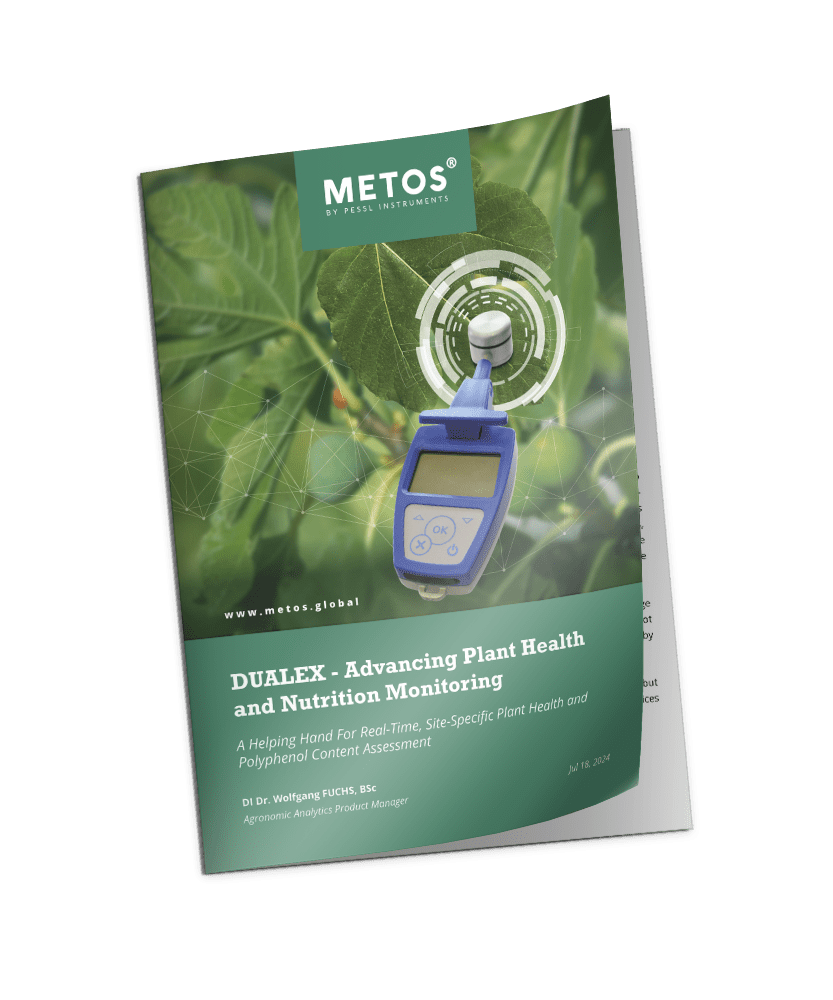Dualex
Measure Plant Nitrogen and Chlorophyll Instantly, Without Damaging the Leaf
Dualex delivers fast, non-destructive readings of chlorophyll and flavonols for accurate insight into plant nutrition and physiology, trusted in both field and research environments.

О сайте Dualex
Thanks to its patented optical technology, Dualex provides precise, repeatable measurements of chlorophyll and flavonols directly on the leaf, in seconds and without destructive sampling.
It helps you quantify nitrogen balance, monitor plant health, and optimize crop management or research outcomes with confidence.
- Non-destructive, in site measurements
- Instant data on chlorophyll and flavonols
- Proven correlation with laboratory analysis
- Reliable indicator of nitrogen balance (NBI®)
- Lightweight, portable, and easy to use
- Consistent performance in both field and controlled environments
Accurate measurement of chlorophyll and flavonols
Хлорофилл играет важную роль в фотосинтезе и развитии растений. Dualex измеряет содержание хлорофилла, анализируя свет, проходящий через лист, в определенных длинах волн. Содержание хлорофилла указывается как абсолютное значение в мкг/см².
С помощью одного измерения Dualex фиксирует не только содержание хлорофилла, но и индексы флавонолов.
Флавонолы в основном синтезируются после воздействия света. Как следствие, они являются хорошим индикатором истории взаимодействия растений со светом.
Флавонолы относятся к группе полифенолов, известных своими разнообразными полезными свойствами. Эти соединения обладают антиоксидантными свойствами, которые помогают уменьшить повреждение клеток и воспаление. Флавонолы связаны с улучшением сердечно-сосудистого здоровья и способны снизить риск нейродегенеративных заболеваний, таких как болезнь Альцгеймера.
Dualex измеряет флавонолы, анализируя их влияние на флуоресценцию хлорофилла. Интеллектуальная измерительная система использует различные длины волн света для возбуждения хлорофилла, измерения его флуоресценции и последующего расчета результатов. Флавонолы представлены в виде относительной абсорбции.
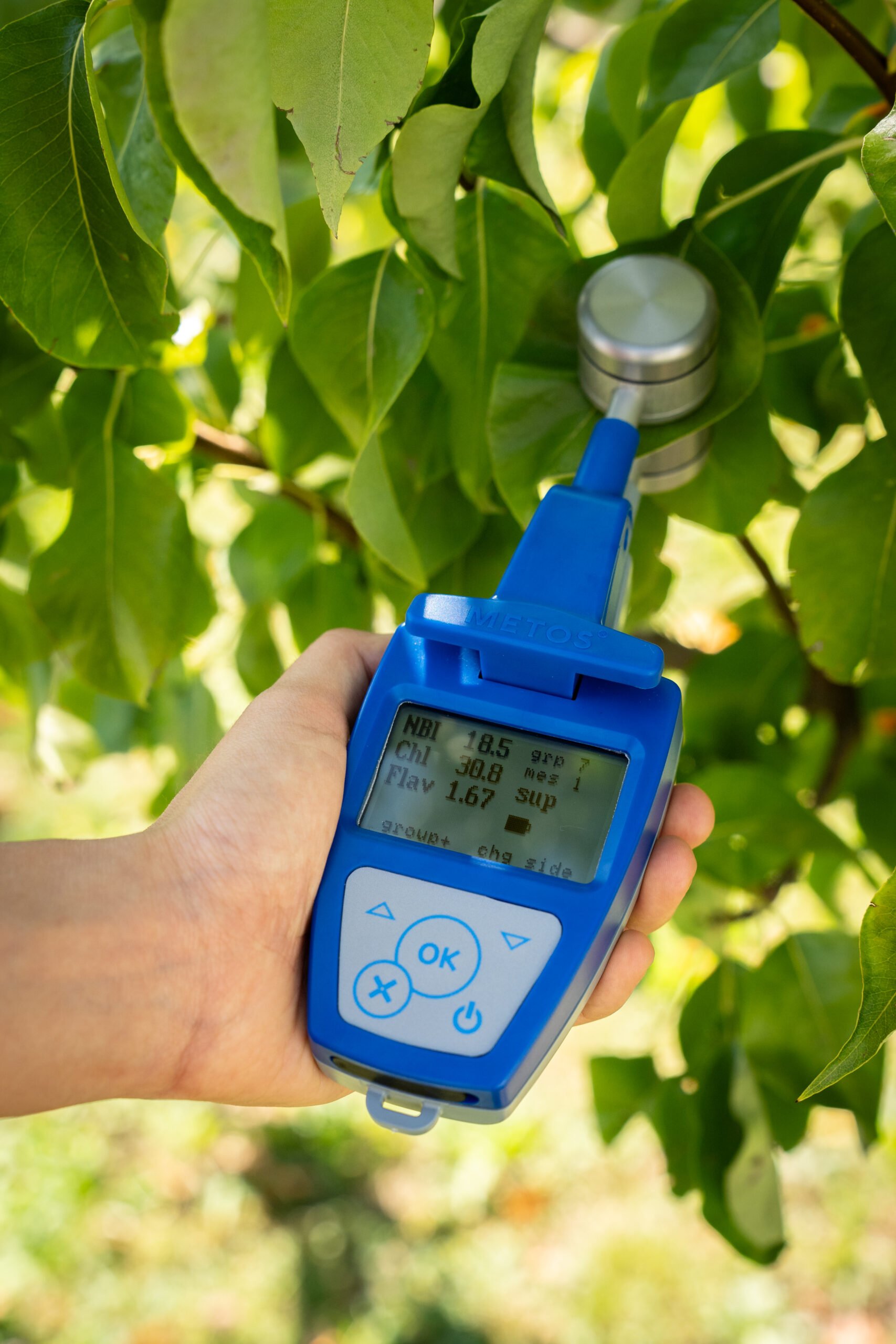
Как это работает?
No destructive sampling. No waiting for lab results. Just instant, accurate data where it matters most.
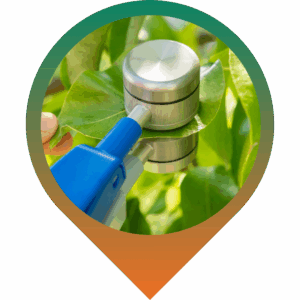

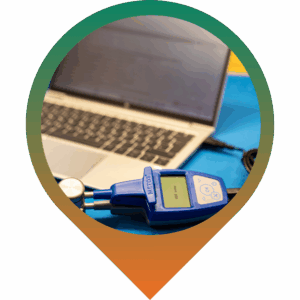
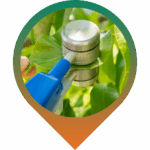
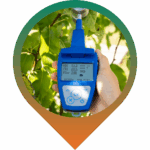
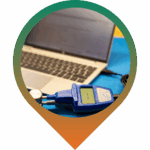
Хотите узнать больше? Download The Use Case Brochure
NBI®: Индекс азотного баланса
Хлорофилл часто используется в качестве индикатора азотного статуса растений. Несколько лет исследований и экспериментов показали, что полифенолы, в частности флавонолы, также являются хорошими индикаторами азотного статуса растений.
NBI® (индекс азотного баланса) объединяет хлорофилл и флавонолы в единый, более точный результат. Это индикатор азотного статуса растений, напрямую коррелирующий с содержанием азота в массе. NBI® менее чувствителен к изменениям условий окружающей среды, чем хлорофилл (возраст листьев, их толщина...).

This dual-parameter approach provides a more stable and representative indicator than single-variable methods, supporting better analysis and more informed decisions.
Request a non-binding offer
Хотите узнать больше?
Погрузитесь в наш НОВЫЙ БЛОГ для получения подробных сведений, информации и последних обновлений о Dualex.
Кроме того, не упустите возможность Загрузите нашу подробную брошюру БЕСПЛАТНО!
Посетите сайт прямо сейчас, чтобы расширить свои знания и оставаться в курсе событий!
ЧАСТО ЗАДАВАЕМЫЕ ВОПРОСЫ

